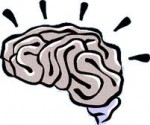Your environment includes the places, climates, energies and moods that make up your cultural and social settings. I live in a safe little suburban town with relatively stable home prices, good schools, and easy access to groceries, libraries, recreational activities, cultural events, etc. That is all part of my environment. I live in Colorado, a state high in altitude, with an arid climate that can impact water resources and lead to wildfires, whose economy seems to be rebounding from the downturn. That is also part of my environment. I am a citizen of the United States, a country still recovering from recession, with a relatively stable political climate and consumer driven economy. Again, that’s part of my environment. You get the picture.
Your community includes the friends, family, colleagues, and acquaintances with whom you live, worship, socialize, recreate and/or work. I live with my wife and three kids, socialize and recreate with several of my neighbors, have family in neighboring communities, and colleagues all across the Front Range. That is all part of my community.
Environment and community can have a significant impact on our stability, safety, security, and opportunity. Because they heavily influence what we think, feel, perceive, believe, and ultimately how we act and react, they also heavily influence our ability to make changes in our lives. I like to think of this environment and community as the soil that each of us, the seeds, are planted in. Nutrient rich, robust soil typically yields hearty, prolific plants while nutrient poor, depleted soil yields feeble, barren ones.
A former client of mine, Sally, for example, lived in the same city as a lot of her friends from college. As single women, they had all had similarly paying jobs and liked to hang out together during their free time doing things they all enjoyed and could all afford. One by one, Sally and the rest of her posse settled down and got married. Unfortunately for Sally, most of her friends married “up” financially. Sally married right where she was. Over time Sally’s friends began socializing more and more frequently at sophisticated, pricier venues in lieu of the old swingin’ singles day’s standbys. As her community changed around her, Sally, who didn’t want to lose her friends, tried desperately to keep up even though she couldn’t afford to and eventually found herself with massive amounts of debt and in financial distress. Sally’s environment and community had become a huge disadvantage in terms of financial growth.
For our purposes, I will define three significant community tendencies that can get in the way of our attempts at change.
First, as we noted above in our justifications, we often use “social proof,” which is “well, everyone else is doing it.” In this case, we give ourselves a little latitude in our efforts and perhaps don’t stick totally to our new change.
The second tendency that can impact our behaviors is “social contagion”. As you can probably imagine from the term, like a contagious disease that spreads, our behaviors – whether they be positive behaviors or negative behaviors – can spread to other people or can be caught from other people. Excessive eating, increased drinking or even just being in a bad mood can spread through social networks causing the people in proximity to behave similarly to those around them.
And the third tendency is similar to our own internal justifications, but it happens when your friends or family help you to justify your behaviors. I call this “group justification” and it happens quite frequently. For example, let’s say you go to Starbucks with a friend and on the way there you explain that you’re on a diet and have been trying to eat healthier lately but that this week you’ve been feeling especially stressed out, there is a strong likelihood that your friend will actually encourage you to get a “special treat” at Starbucks and then help you to justify the behavior as stress relief, an outlet, or something that will make you feel better. And it doesn’t have to be your best friend either. People who don’t even know you very well will chime in and tell you that it is okay to “let off a little steam” by eating something decadent after a particularly stressful week, even though you’re on a diet and have been trying to eat healthier lately.
Obviously, there’s a flip side to these potential barriers that we want to recognize. If the community and environment that you are in is supportive, that can be a tremendously beneficial asset.
So, take a moment and see if you can identify in your life some places where your people and places hinder your change efforts. Or, perhaps you can identify how they are helpful!

